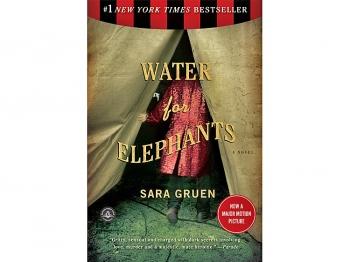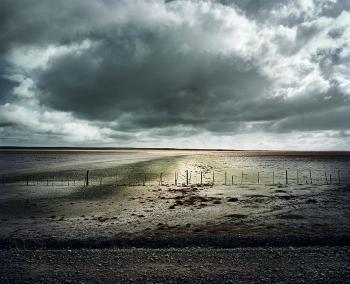Mockingjay is the final book of the Hunger Games trilogy by Suzanne Collins. The first two books in the trilogy—Hunger Games and Catching Fire, were best sellers. Mockingjay has also become a New York Times bestselling novel. It continues the fascinating story of a teenage girl named Katniss Evergreen and her life in a future North American world called Panem.
The nation of Panem sits in the ruins of what was once the continent of North America, and has been divided into 13 districts with one shining capitol situated in the middle. The leaders of the Capitol are cruel masters keeping the districts in line by demanding that all goods from each district be sent to the Capitol. This includes food, as well as items like coal or wood so that fuel is a commodity only freely available to the people living in the Capitol.
But the most cruel and harsh law that the Capitol uses to keep the people in the districts in line—and to make sure they remember their “place”—is one requiring each district to send one boy and one girl to participate in the annual Hunger Games, a fight to the death broadcast on live TV. The names are chosen each year in a lottery. Out of the participants, only one will survive, and there can be only one winner.
The participants are sent for training in the Capitol for several weeks—given lavish dinners and parties and dressed in costumes made by the most popular designers in the Capitol. They are introduced to the rich, selfish, and pampered citizens of the Capitol and are treated almost like pets by the masses.
The Hunger Games are held each year in the newly designed Arena, a huge outdoor arena full of dangers from nature such as animals and horrible weather, and also man-made creations, to test the participants to the fullest.
In the first book, Hunger Games when Katniss’s twelve-year-old sister Prim is called in the lottery, Katniss volunteers to take her place, realizing she has probably given herself a death sentence. But Katniss has been close to death before, and her survival instincts have served her well.
The second book, Catching Fire continues the story of Katniss and the group of friends and enemies she has made in the Games—including Peeta, a boy from her own District 12, who has loved Katniss since they were small children. Katniss and Peeta’s goal was just to survive the Games and make it back home. But unbelievably, they fueled a heated response from the people in the Districts and rebellion and talk of revolution are in the air.
Horrific events take place at the Games in book two and lead to the surprising and amazing final book, Mockingjay. Katniss’s world becomes filled with rebels and Capitol leaders, friends and enemies.
Katniss doesn’t realize that she has long been a part of the revolution. She returns from the games to live in District 13, home of the rebels who are plotting to overthrow the Capitol government. But the rebellion’s success depends on Katniss’s willingness to be a pawn in the “game” to help change the future of Panem.
She has to decide whether to be true to herself, or to those she loves, or to her people who are suffering—and decide whether she can live with herself if she causes the death of someone due to her assigned task.
The Hunger Games trilogy is reminiscent of Orwell’s “1984"—what happens when Big Brother takes over. But the setting is a marvelous invention of what our world could become—a smaller population separated by walled-in districts and generally unaware of the goings-on in other districts and the Capitol. Watching the “games” is the only thing that unites all of Panem.
All three books are suspenseful and keep readers anxiously waiting to see what fate awaits Katniss on the next page. The story itself is fascinating, but the underlying truth skillfully laid out in the books is to show us what is—or at least what should be—the most important thing to strive for in our lives—to find the worth of every human being. It definitely has a deep message, but Collins weaves the story so artfully that we are not just given a lesson—but entertained and enraptured at the same time.
The nation of Panem sits in the ruins of what was once the continent of North America, and has been divided into 13 districts with one shining capitol situated in the middle. The leaders of the Capitol are cruel masters keeping the districts in line by demanding that all goods from each district be sent to the Capitol. This includes food, as well as items like coal or wood so that fuel is a commodity only freely available to the people living in the Capitol.
But the most cruel and harsh law that the Capitol uses to keep the people in the districts in line—and to make sure they remember their “place”—is one requiring each district to send one boy and one girl to participate in the annual Hunger Games, a fight to the death broadcast on live TV. The names are chosen each year in a lottery. Out of the participants, only one will survive, and there can be only one winner.
The participants are sent for training in the Capitol for several weeks—given lavish dinners and parties and dressed in costumes made by the most popular designers in the Capitol. They are introduced to the rich, selfish, and pampered citizens of the Capitol and are treated almost like pets by the masses.
The Hunger Games are held each year in the newly designed Arena, a huge outdoor arena full of dangers from nature such as animals and horrible weather, and also man-made creations, to test the participants to the fullest.
In the first book, Hunger Games when Katniss’s twelve-year-old sister Prim is called in the lottery, Katniss volunteers to take her place, realizing she has probably given herself a death sentence. But Katniss has been close to death before, and her survival instincts have served her well.
The second book, Catching Fire continues the story of Katniss and the group of friends and enemies she has made in the Games—including Peeta, a boy from her own District 12, who has loved Katniss since they were small children. Katniss and Peeta’s goal was just to survive the Games and make it back home. But unbelievably, they fueled a heated response from the people in the Districts and rebellion and talk of revolution are in the air.
Horrific events take place at the Games in book two and lead to the surprising and amazing final book, Mockingjay. Katniss’s world becomes filled with rebels and Capitol leaders, friends and enemies.
Katniss doesn’t realize that she has long been a part of the revolution. She returns from the games to live in District 13, home of the rebels who are plotting to overthrow the Capitol government. But the rebellion’s success depends on Katniss’s willingness to be a pawn in the “game” to help change the future of Panem.
She has to decide whether to be true to herself, or to those she loves, or to her people who are suffering—and decide whether she can live with herself if she causes the death of someone due to her assigned task.
The Hunger Games trilogy is reminiscent of Orwell’s “1984"—what happens when Big Brother takes over. But the setting is a marvelous invention of what our world could become—a smaller population separated by walled-in districts and generally unaware of the goings-on in other districts and the Capitol. Watching the “games” is the only thing that unites all of Panem.
All three books are suspenseful and keep readers anxiously waiting to see what fate awaits Katniss on the next page. The story itself is fascinating, but the underlying truth skillfully laid out in the books is to show us what is—or at least what should be—the most important thing to strive for in our lives—to find the worth of every human being. It definitely has a deep message, but Collins weaves the story so artfully that we are not just given a lesson—but entertained and enraptured at the same time.




